Shadman Sakib
A Survey on Efficient Vision-Language Models
Apr 13, 2025Abstract:Vision-language models (VLMs) integrate visual and textual information, enabling a wide range of applications such as image captioning and visual question answering, making them crucial for modern AI systems. However, their high computational demands pose challenges for real-time applications. This has led to a growing focus on developing efficient vision language models. In this survey, we review key techniques for optimizing VLMs on edge and resource-constrained devices. We also explore compact VLM architectures, frameworks and provide detailed insights into the performance-memory trade-offs of efficient VLMs. Furthermore, we establish a GitHub repository at https://github.com/MPSCUMBC/Efficient-Vision-Language-Models-A-Survey to compile all surveyed papers, which we will actively update. Our objective is to foster deeper research in this area.
A Novel Ensemble-Based Deep Learning Model with Explainable AI for Accurate Kidney Disease Diagnosis
Dec 12, 2024Abstract:Chronic Kidney Disease (CKD) represents a significant global health challenge, characterized by the progressive decline in renal function, leading to the accumulation of waste products and disruptions in fluid balance within the body. Given its pervasive impact on public health, there is a pressing need for effective diagnostic tools to enable timely intervention. Our study delves into the application of cutting-edge transfer learning models for the early detection of CKD. Leveraging a comprehensive and publicly available dataset, we meticulously evaluate the performance of several state-of-the-art models, including EfficientNetV2, InceptionNetV2, MobileNetV2, and the Vision Transformer (ViT) technique. Remarkably, our analysis demonstrates superior accuracy rates, surpassing the 90% threshold with MobileNetV2 and achieving 91.5% accuracy with ViT. Moreover, to enhance predictive capabilities further, we integrate these individual methodologies through ensemble modeling, resulting in our ensemble model exhibiting a remarkable 96% accuracy in the early detection of CKD. This significant advancement holds immense promise for improving clinical outcomes and underscores the critical role of machine learning in addressing complex medical challenges.
Prediction of Temperature and Rainfall in Bangladesh using Long Short Term Memory Recurrent Neural Networks
Oct 22, 2020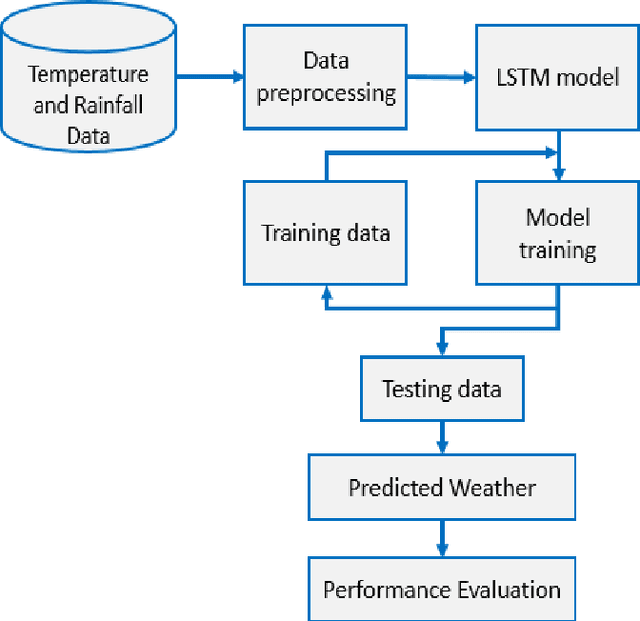
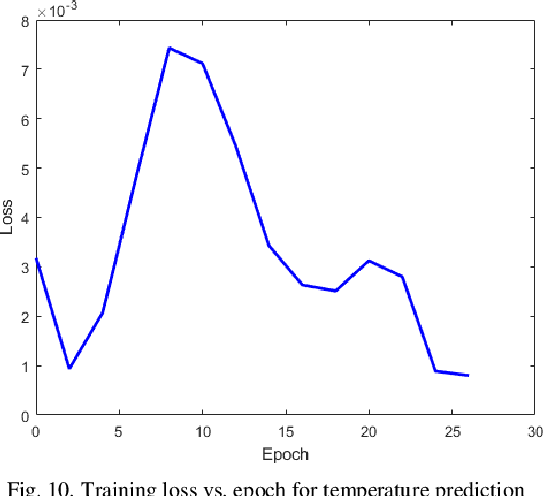
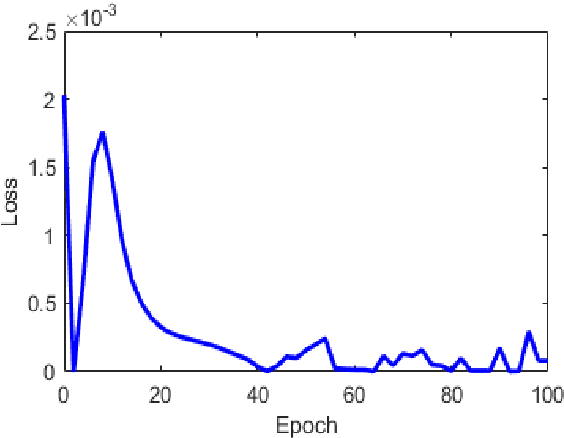
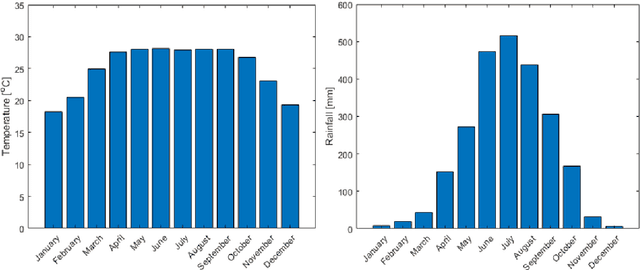
Abstract:Temperature and rainfall have a significant impact on economic growth as well as the outbreak of seasonal diseases in a region. In spite of that inadequate studies have been carried out for analyzing the weather pattern of Bangladesh implementing the artificial neural network. Therefore, in this study, we are implementing a Long Short-term Memory (LSTM) model to forecast the month-wise temperature and rainfall by analyzing 115 years (1901-2015) of weather data of Bangladesh. The LSTM model has shown a mean error of -0.38oC in case of predicting the month-wise temperature for 2 years and -17.64mm in case of predicting the rainfall. This prediction model can help to understand the weather pattern changes as well as studying seasonal diseases of Bangladesh whose outbreaks are dependent on regional temperature and/or rainfall.
Deep Convolutional Neural Networks Model-based Brain Tumor Detection in Brain MRI Images
Oct 03, 2020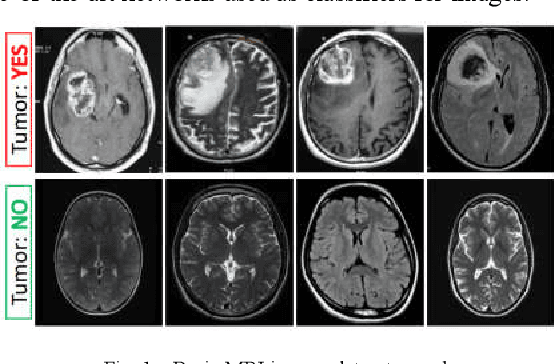
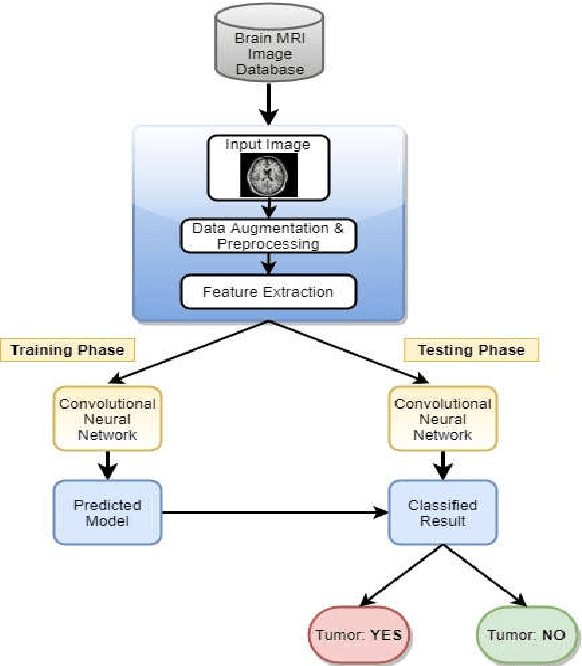
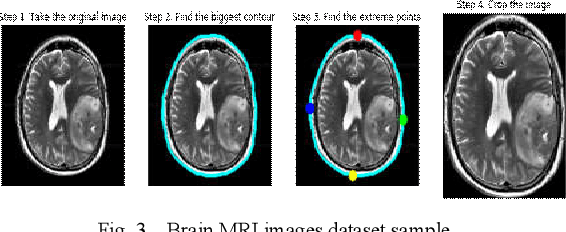
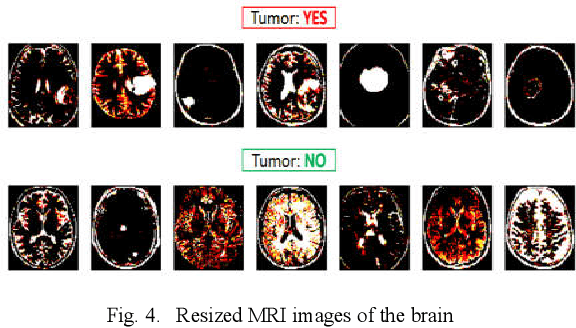
Abstract:Diagnosing Brain Tumor with the aid of Magnetic Resonance Imaging (MRI) has gained enormous prominence over the years, primarily in the field of medical science. Detection and/or partitioning of brain tumors solely with the aid of MR imaging is achieved at the cost of immense time and effort and demands a lot of expertise from engaged personnel. This substantiates the necessity of fabricating an autonomous model brain tumor diagnosis. Our work involves implementing a deep convolutional neural network (DCNN) for diagnosing brain tumors from MR images. The dataset used in this paper consists of 253 brain MR images where 155 images are reported to have tumors. Our model can single out the MR images with tumors with an overall accuracy of 96%. The model outperformed the existing conventional methods for the diagnosis of brain tumor in the test dataset (Precision = 0.93, Sensitivity = 1.00, and F1-score = 0.97). Moreover, the proposed model's average precision-recall score is 0.93, Cohen's Kappa 0.91, and AUC 0.95. Therefore, the proposed model can help clinical experts verify whether the patient has a brain tumor and, consequently, accelerate the treatment procedure.
Performance Analysis of Deep Autoencoder and NCA Dimensionality Reduction Techniques with KNN, ENN and SVM Classifiers
Dec 24, 2019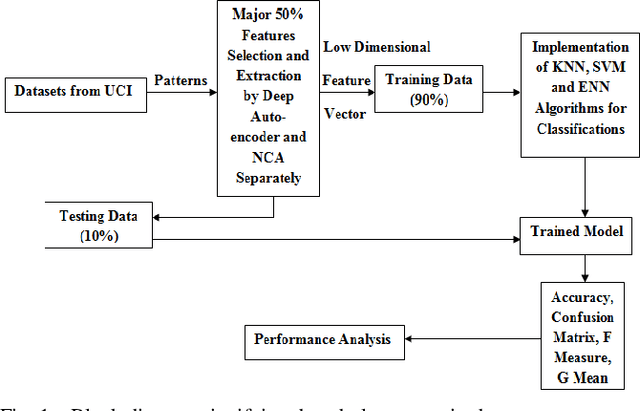
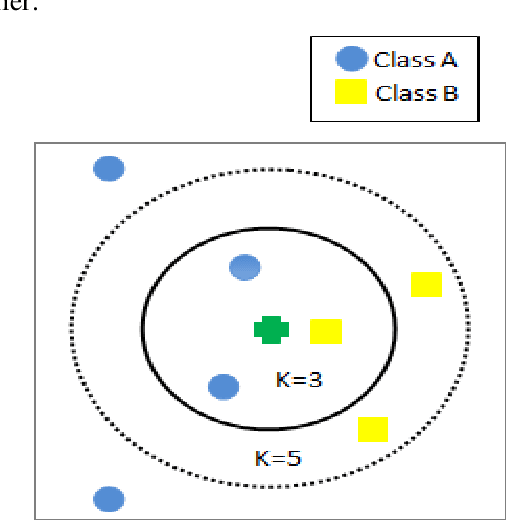
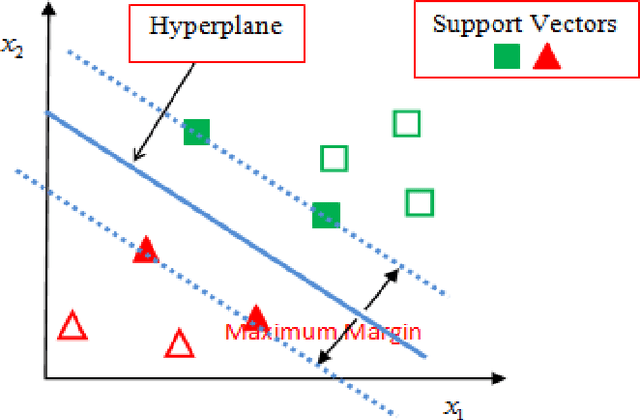
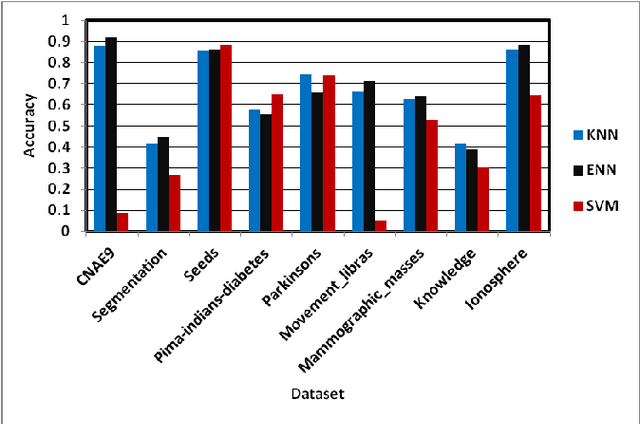
Abstract:The central aim of this paper is to implement Deep Autoencoder and Neighborhood Components Analysis (NCA) dimensionality reduction methods in Matlab and to observe the application of these algorithms on nine unlike datasets from UCI machine learning repository. These datasets are CNAE9, Movement Libras, Pima Indians diabetes, Parkinsons, Knowledge, Segmentation, Seeds, Mammographic Masses, and Ionosphere. First of all, the dimension of these datasets has been reduced to fifty percent of their original dimension by selecting and extracting the most relevant and appropriate features or attributes using Deep Autoencoder and NCA dimensionality reduction techniques. Afterward, each dataset is classified applying K-Nearest Neighbors (KNN), Extended Nearest Neighbors (ENN) and Support Vector Machine (SVM) classification algorithms. All classification algorithms are developed in the Matlab environment. In each classification, the training test data ratio is always set to ninety percent: ten percent. Upon classification, variation between accuracies is observed and analyzed to find the degree of compatibility of each dimensionality reduction technique with each classifier and to evaluate each classifier performance on each dataset.
Non-Intrusive Electrical Appliances Monitoring and Classification using K-Nearest Neighbors
Nov 22, 2019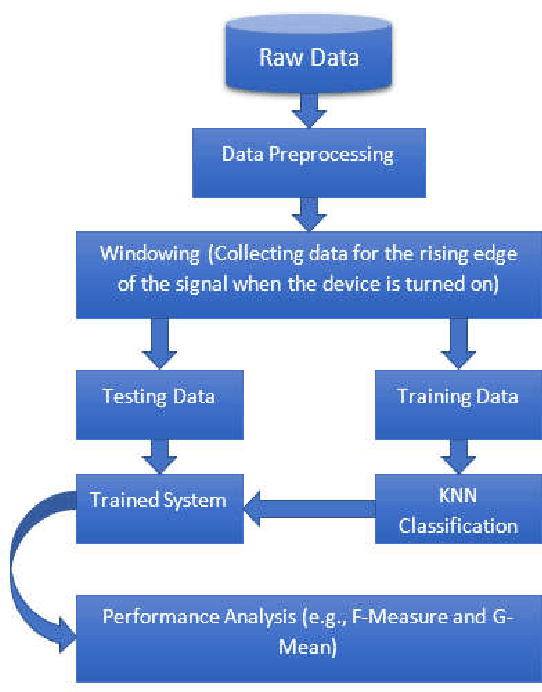
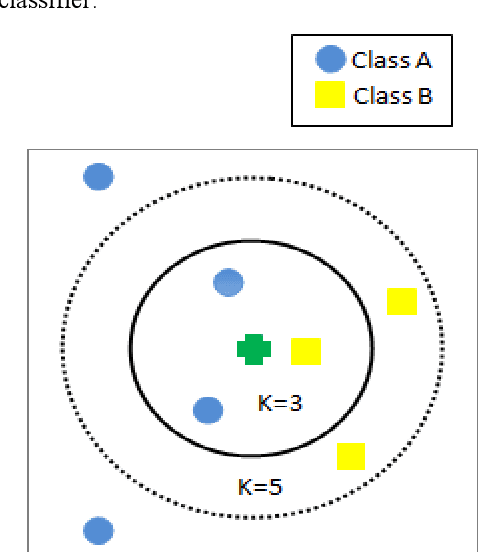
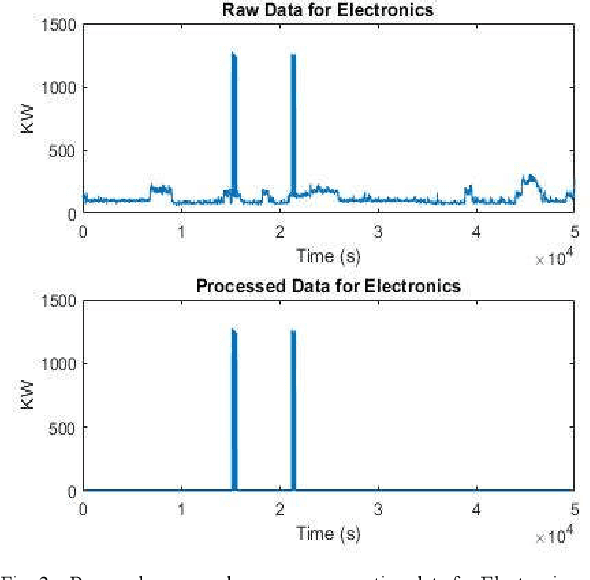
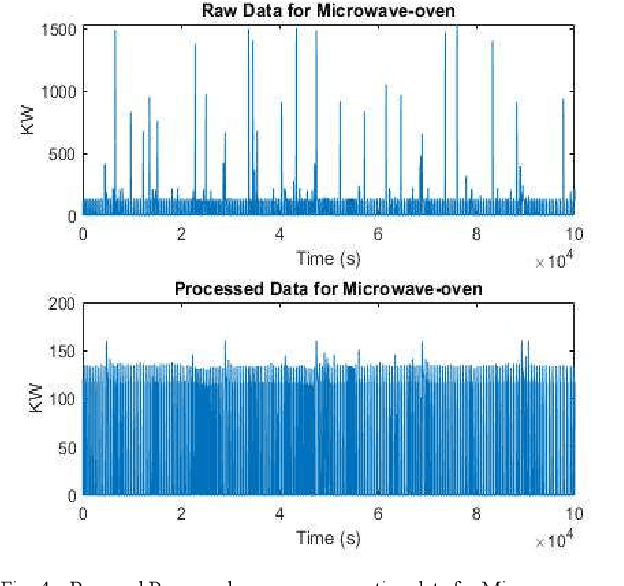
Abstract:Non-Intrusive Load Monitoring (NILM) is the method of detecting an individual device's energy signal from an aggregated energy consumption signature [1]. As existing energy meters provide very little to no information regarding the energy consumption of individual appliances apart from the aggregated power rating, the spotting of individual appliances' energy usages by NILM will not only provide consumers the feedback of appliance-specific energy usage but also lead to the changes of their consumption behavior which facilitate energy conservation. B Neenan et al. [2] have demonstrated that direct individual appliance-specific energy usage signals lead to consumers' behavioral changes which improves energy efficiency by as much as 15%. Upon disaggregation of an energy signal, the signal needs to be classified according to the appropriate appliance. Hence, the goal of this paper is to disaggregate total energy consumption data to individual appliance signature and then classify appliance-specific energy loads using a prominent supervised classification method known as K-Nearest Neighbors (KNN). To perform this operation we have used a publicly accessible dataset of power signals from several houses known as the REDD dataset. Before applying KNN, data is preprocessed for each device. Then KNN is applied to check whether their energy consumption signature is separable or not. KNN is applied with K=5.
Recognition of Handwritten Digit using Convolutional Neural Network in Python with Tensorflow and Comparison of Performance for Various Hidden Layers
Sep 12, 2019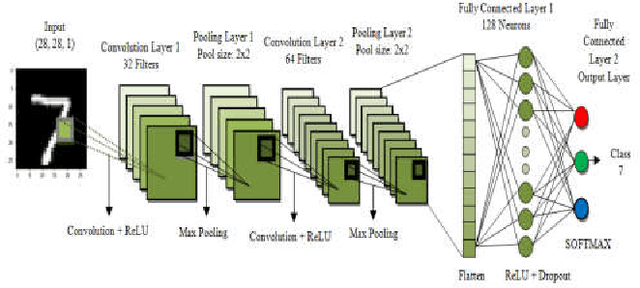
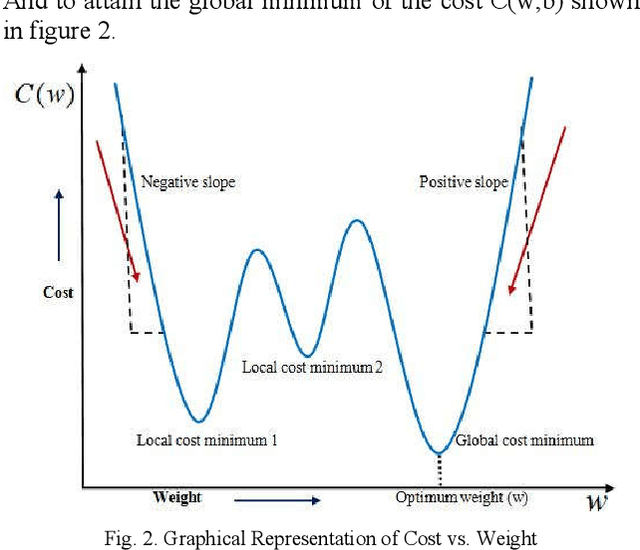
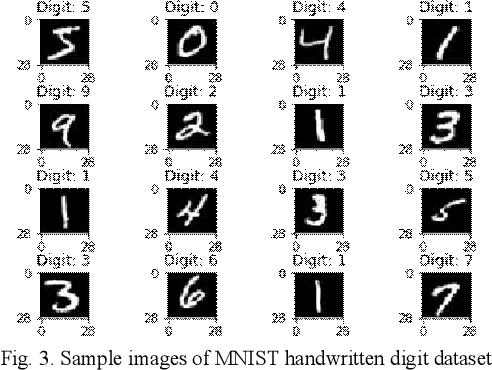

Abstract:In recent times, with the increase of Artificial Neural Network (ANN), deep learning has brought a dramatic twist in the field of machine learning by making it more artificially intelligent. Deep learning is remarkably used in vast ranges of fields because of its diverse range of applications such as surveillance, health, medicine, sports, robotics, drones, etc. In deep learning, Convolutional Neural Network (CNN) is at the center of spectacular advances that mixes Artificial Neural Network (ANN) and up to date deep learning strategies. It has been used broadly in pattern recognition, sentence classification, speech recognition, face recognition, text categorization, document analysis, scene, and handwritten digit recognition. The goal of this paper is to observe the variation of accuracies of CNN to classify handwritten digits using various numbers of hidden layers and epochs and to make the comparison between the accuracies. For this performance evaluation of CNN, we performed our experiment using Modified National Institute of Standards and Technology (MNIST) dataset. Further, the network is trained using stochastic gradient descent and the backpropagation algorithm.
Implementation of Fruits Recognition Classifier using Convolutional Neural Network Algorithm for Observation of Accuracies for Various Hidden Layers
Apr 23, 2019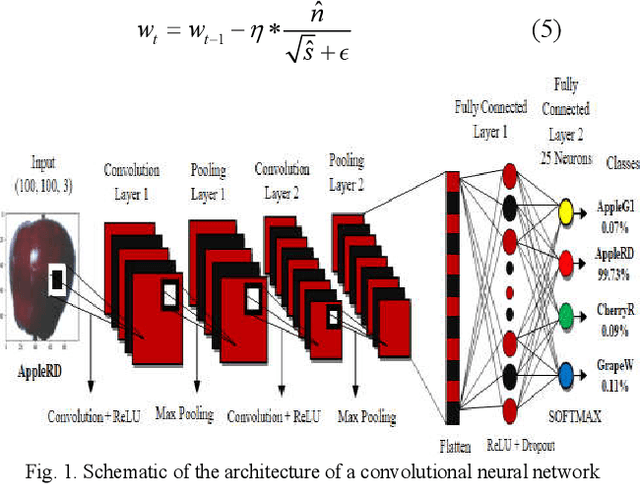
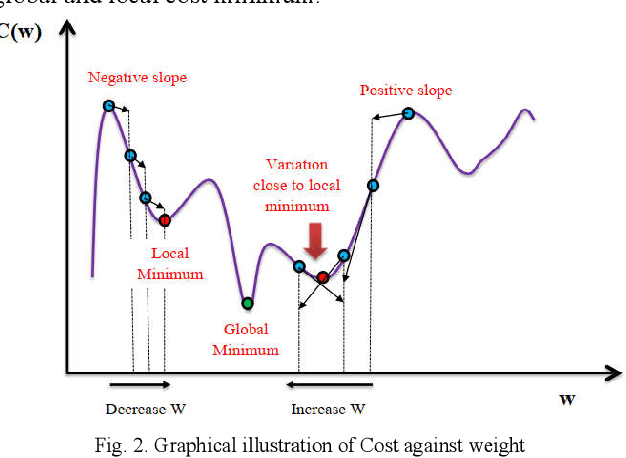
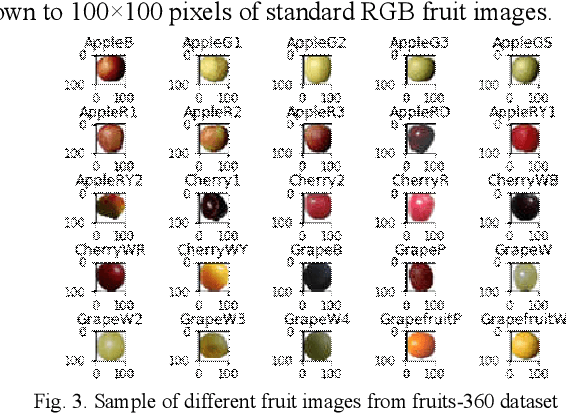
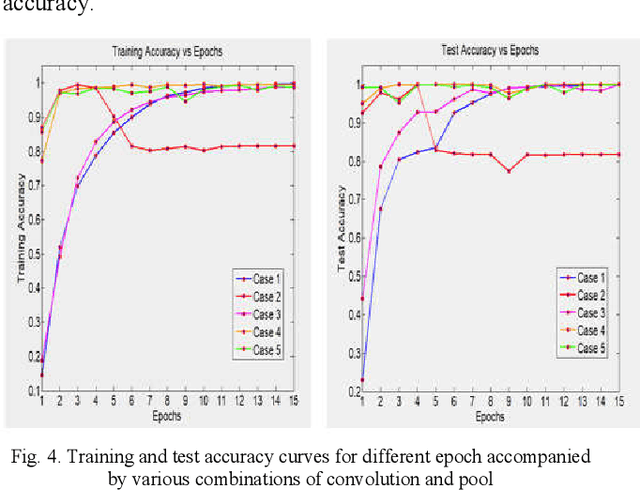
Abstract:Fruit recognition using Deep Convolutional Neural Network (CNN) is one of the most promising applications in computer vision. In recent times, deep learning based classifications are making it possible to recognize fruits from images. However, fruit recognition is still a problem for the stacked fruits on weighing scale because of the complexity and similarity. In this paper, a fruit recognition system using CNN is proposed. The proposed method uses deep learning techniques for the classification. We have used Fruits-360 dataset for the evaluation purpose. From the dataset, we have established a dataset which contains 17,823 images from 25 different categories. The images are divided into training and test dataset. Moreover, for the classification accuracies, we have used various combinations of hidden layer and epochs for different cases and made a comparison between them. The overall performance losses of the network for different cases also observed. Finally, we have achieved the best test accuracy of 100% and a training accuracy of 99.79%.
Unsupervised Segmentation Algorithms' Implementation in ITK for Tissue Classification via Human Head MRI Scans
Feb 26, 2019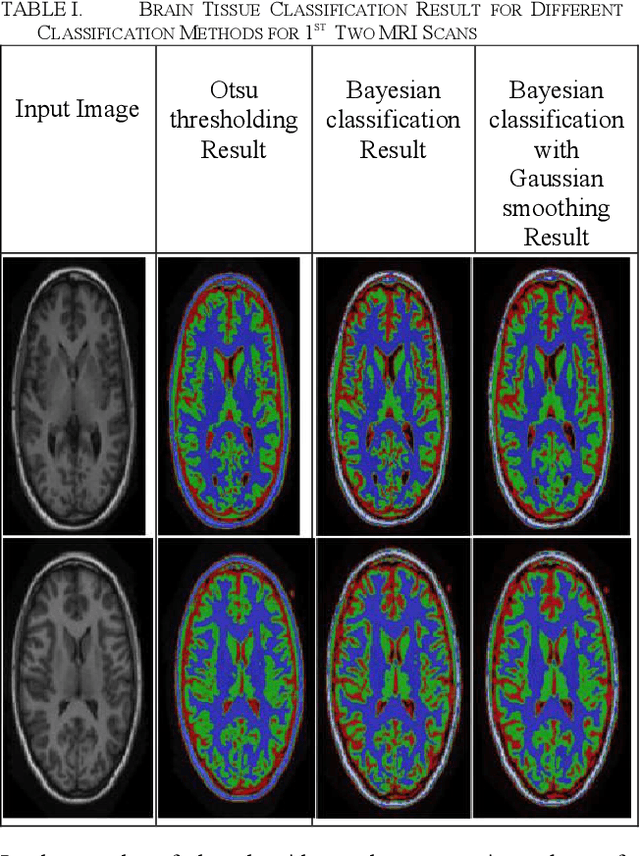
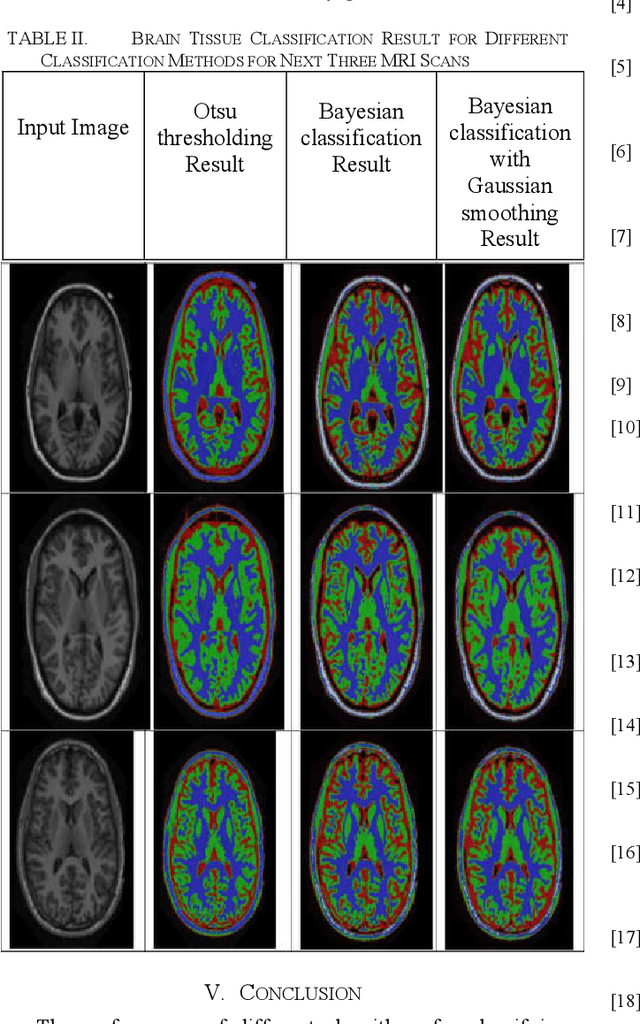
Abstract:Tissue classification is one of the significant tasks in the field of biomedical image analysis. Magnetic Resonance Imaging (MRI) is of great importance in tissue classification especially in the areas of brain tissue classification which is able to recognize anatomical areas of interest such as surgical planning, monitoring therapy, clinical drug trials, image registration, stereotactic neurosurgery, radiotherapy etc. The task of this paper is to implement different unsupervised classification algorithms in ITK and perform tissue classification (white matter, gray matter, cerebrospinal fluid (CSF) and background of the human brain). For this purpose, 5 grayscale head MRI scans are provided. In order of classifying brain tissues, three algorithms are used. These are: Otsu thresholding, Bayesian classification and Bayesian classification with Gaussian smoothing. The obtained classification results are analyzed in the results and discussion section.
Maze solving Algorithm for line following robot and derivation of linear path distance from nonlinear path
Jan 04, 2015



Abstract:In this paper we have discussed a unique general algorithm for exploring and solving any kind of line maze with another simple one for simple mazes without loops or loops having highest two branches none of which are inward. For the general algorithm, we need a method to map the whole maze, which is required if the maze is complex. The proposed maze mapping system is based on coordinate system and after mapping the whole maze as a graph in standard 'Adjacency-list representation' method, shortest path and shortest time path was extracted using Dijkstra's algorithm. In order to find the coordinates of the turning points and junctions, linear distance between the points are needed, for which wheel encoder was used. However, due to non-linear movement of robot, the directly measured distance from the encoder has some error and to remove this error an idea is built up which ended by deriving equations that gives us almost exact linear distance between two points from the reading of wheel encoder of the robot moving in a non-linear path.
 Add to Chrome
Add to Chrome Add to Firefox
Add to Firefox Add to Edge
Add to Edge